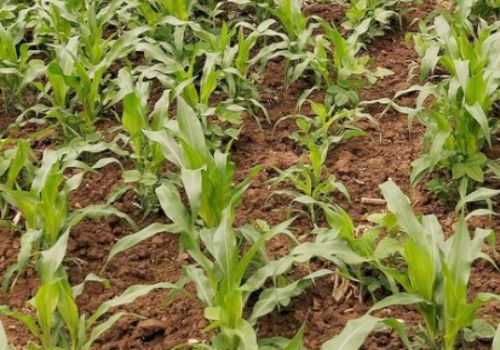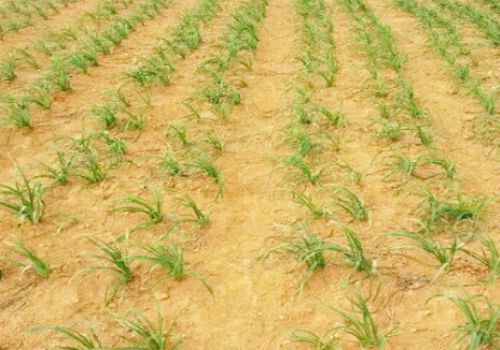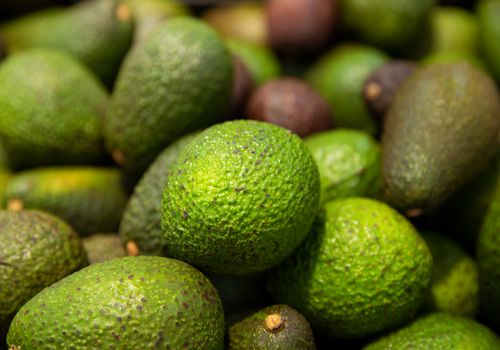Introduction to the planting method of Rosa roxburghii roxburghii for both medicine and food!
Rosa roxburghii, also known as Rosa roxburghii, is a typical plant for both medicine and food. Its fruit is crisp, sweet and sour, and has high medicinal value. It has a certain role in enhancing body resistance and nourishing fitness, and some growers also want to grow it. Then the editor will introduce to you the planting method of Rosa roxburghii.
I. planting conditions
Rosa roxburghii prefers a warm and humid climate, and is generally suitable for living in a climate with an average annual temperature of about 12-16. In addition, it can be planted in areas with annual precipitation of more than 1000 milliliters. It is not strict with the soil, but it is better to use acid or micro-acid soil with fertile, loose and good drainage, which is beneficial to its growth and development as well as its yield and quality.
II. Methods of reproduction
The propagation methods of Rosa roxburghii roxburghii mainly include sowing and cutting, in which sowing can be used in autumn and spring, and its seeds have no obvious dormancy period, but can be sowed after maturity, and the general survival rate is more than 90%. Before sowing, soak the seeds in warm hot water for 12-24 hours before sowing, which can not only germinate in advance but also improve the germination rate, and the cuttings can be carried out in other seasons outside winter. Cut the branches of the same year on the robust planting into a section of 10-12cm, and put oblique shears at the lower end of the room under the bud and put an oblique shear on the top of the bud to insert the branches into the soil to expose a bud, which can survive after stepping on the soil for about one month, and can also be inserted and partially smeared with rooting powder to improve the survival rate.
Third, planting time
The planting time should be from December to February. Before planting, the soil preparation and fertilization should be carried out, and then the planting holes should be dug according to the plant row spacing of 1.5 meters. The general hole specification requires each 50cm of length, width and depth. Before planting, base fertilizer and a small amount of calcium, magnesium and phosphate fertilizer should be applied to each hole. When planting, the root system should be extended and not twisted together, and the filling soil can generally lift the seedlings up to make the roots open. Then cover the soil, step on the ground and pour enough fixed planting water.

IV. Field management
After planting, it is necessary to water and fertilize reasonably according to the growth status of the plant, and to water in time during drought, but in the rainy season, we should remember to drain water so as not to affect the root system, and we should do a good job of ploughing and weeding to make the plant grow healthy. in addition, we should also pay attention to the harm of diseases and insect pests. The main diseases and insect pests of Rosa roxburghii are powdery mildew, aphids, thorn moth, debt avoidance moth, black whitefly, heart-eating insect and so on. These diseases will affect the plant growth, light growth weak and serious will cause death, so it is necessary to do a good job in pest control.
Summary: the above is about the introduction of Rosa roxburghii planting methods, growers can refer to the above planting methods to plant Rosa roxburghii Rosa roxburghii, hoping to help friends in need!
Pictures of Rosa roxburghii and related introduction
Have you ever heard of such things as Rosa roxburghii? The editor heard that this kind of thing is still a wild specialty on the Guizhou plateau, known as the "king of vitamin C". It can be used to eat raw, fried soup, make tea, or soak wine, boil cream, etc., very rich in nutrition, but also have some side effects. So, what does this kind of Rosa roxburghii look like, where is it mainly distributed, how to cultivate it, and what is its main value? Today, the editor will introduce Rosa roxburghii to you.
Geographical distribution:
Rosa roxburghii is a unique wild resource in the Yunnan-Guizhou Plateau and the western plateau of Sichuan. It is mainly produced in western Guizhou and Xiangxi in Hunan, followed by Yunnan, and is also distributed in Liangshan, northern and eastern Sichuan. Guilin Town, Tongnan County, Chongqing also has a long history of reproduction, which is still widely distributed in mountainous areas and is called "thorn plum" and "thorn pineapple" by locals. This green resource has not been well developed and utilized, and it is a great snub to the selfless gift of nature.
The distribution and development are roughly as follows:
Bijie, Liupanshui and Tongren in Guizhou are the areas with the most abundant Rosa roxburghii resources. Anshun now grows a seedless Rosa roxburghii, which is loved by the majority of consumers. The surrounding area of Guiyang, the provincial capital, is also widely distributed. It can be said that Rosa roxburghii has a long history as a variety for both medicine and food in Guizhou. It has become a habit for people to eat it as a fruit or to make wine. In the new production season from August to September every year, dried fruits and fresh fruits of Rosa roxburghii can be seen on the streets and alleys, and some manufacturers regard it as "Yan Huang Sheng fruit" to develop, produce into drinks and enter the supermarket. Rosa roxburghii is good in quality and cheap in price.
Rosa roxburghii roxburghii was planted in the old route of the Yellow River in Kaifeng, Henan Province in 1993. compared with the southwest planting area, the harvest season of Rosa roxburghii was about one month ahead of schedule, and it was harvested in the dog days from July to August. It is the main producing area of dried Rosa roxburghii.
Xiangxi Hunan is also rich in wild Rosa roxburghii resources, mainly distributed in Phoenix, Baojing, Jishou, Guzhang, Yongshun, Longshan and other counties and cities. There were about 4 million trees in the prefecture before 2000, with an annual output of more than 500000 kilograms. Because of its rich vitamin C content and unique flavor, Rosa roxburghii Tratt is mainly used to produce various types of Rosa roxburghii drinks, such as Rosa roxburghii juice, royal jelly, Rosa roxburghii wine, Rosa roxburghii cola, Rosa roxburghii soda and so on. it can also be used to produce candied Rosa roxburghii, canned Rosa roxburghii, jam and so on. Sichuan Liangshan area has always had the history of cooking Rosa roxburghii Rosa roxburghii, removing seeds, hammering into juice, adding a little salt, and soaking wine. Xichang and Mianning have developed local characteristic enterprises based on Rosa roxburghii fruit juice and Rosa roxburghii wine.
It is also distributed in the river valley of Enshi Autonomous Prefecture of Hubei Province.
Cultivation techniques:
Seedling reproduction can be divided into two ways: seed reproduction and vegetative reproduction.
Seed propagation
Spring sowing and autumn sowing. Rosa roxburghii roxburghii seeds have no obvious dormancy period, and the germination rate and seedling emergence rate can reach more than 90% after the seeds are mature in autumn. Sowing in autumn, collecting seeds after fruit ripening in the first and middle of September, sowing seedling bed immediately, and emerging seedlings in the middle and late October. The nursery was transplanted in March of the following year and can be out at the end of the year. But in winter cold areas need to be covered with plastic film to prevent freezing. It is suitable for spring sowing from late February to early March, emergence in early April and transplanting to nursery from late May to early June. Soak the seeds in warm water of 50 ℃-60 ℃ for 12 hours to 24 hours the day before sowing, then wash and sow the seeds, which can germinate 5 days earlier and increase the germination rate.
Vegetative reproduction
The branches of Rosa roxburghii Tratt are easy to produce adventitious roots and roots are easy to form adventitious buds, which can be propagated and raised by cutting, ramet and striping.
Distinguish between pros and cons:
Look at the appearance
The appearance of the finished Rosa roxburghii roxburghii made in the sun should be yellow and brown, with little damage on the surface and hard shell. On the contrary, the color of the defective products is dirty, dark, impurities, and the color difference is too large.
Watch the color of the soup
Good tea is brewed with boiling water, the soup color should be yellowish brown, red brown, and clear and clear. On the contrary, the color is cloudy and inferior.
Taste tea
Good Rosa roxburghii tea brewed with boiled water has a unique sweet and sour taste, while brewing with warm boiled water highlights the sour taste (warm boiled water can reduce the loss of vitamin C, so retain more sour taste). The secondary fruit tea has a strange taste, while the fumigated Rosa roxburghii tea has astringent and bitter feeling.
Smell it.
The loose fruit will hold it for a while, then put it under your nose and smell it. If you can smell the irritating smell, you can be sure that it has been fumigated by sulfur. For Rosa roxburghii which has been packaged and sealed, the unique fragrance of Rosa roxburghii should be smelled immediately when you open the package for the first time. On the contrary, the smell of strange or prickly nose is inferior or smoked sulfur fruit.
Main values:
Rosa roxburghii has high medicinal value, and its flowers, leaves, fruits and seeds can be used as medicine. It has the effects of invigorating the stomach, digesting food, nourishing and relieving diarrhea. In particular, Rosa roxburghii is rich in superoxide dismutase (SOD). SOD is internationally recognized as an active substance with anti-aging and anti-cancer effects, as well as anti-virus and anti-radiation effects. it is widely used in the prevention and treatment of cardiovascular, digestive system and various tumor diseases.
The fruit of Rosa roxburghii is also a good raw material for processing health food. Ripe Rosa roxburghii is fleshy, sour and sweet, and the fruit is rich in sugar, vitamins, carotene, organic acids and more than 20 kinds of amino acids, more than 10 kinds of trace elements beneficial to human body, and superoxide dismutase. In particular, the content of vitamin C is extremely high, which is the highest in the current fruit, with a content of 841.58 mg ~ 3541.13 mg per 100g of fresh fruit, which is 50 times that of citrus and 10 times that of kiwifruit.
The fruit of Rosa roxburghii Tratt has high nutritional value and medical value. Its taste is sour, astringent and flat; it is used to treat abdominal distension, dysentery, enteritis, vitamin C deficiency, etc., and Rosa roxburghii juice can block the synthesis of N-nitroso compounds in the human body and has anti-cancer effect; it has a special effect on the treatment of human lead poisoning. The effective ingredient vitamin C in Rosa roxburghii extract has the effects of anti-aging and prolonging female puberty! Rosa roxburghii fruit can be processed fruit juice, jam, fruit wine, preserved fruit, candy, pastry and so on. Rosa roxburghii is also a good ornamental flower and hedge plant. In the last century, in 1996, the price of Rosa roxburghii fruit soared, the main reason was that the three oral liquids popular in medicine at that time also used Rosa roxburghii extract!
The above is some of the relevant introduction of Rosa roxburghii, I hope it will be helpful to you. I hope you can master the way to distinguish the advantages and disadvantages of Rosa roxburghii, in case you buy a bad Rosa roxburghii. Although Rosa roxburghii is a very nutritious thing, the editor would like to remind you that you can't eat too much of any nutrition, and so can Rosa roxburghii Rosa roxburghii, which may cause diarrhea if you eat it every day. So we should pay attention to the quantity when we eat. In addition, remember that Rosa roxburghii can't be eaten with shellfish.
- Prev

Introduction to the planting method of "precious wild vegetables" cauliflower!
Cauliflower, also known as brain cauliflower, is a kind of precious wild vegetable in China. It is liked by many people because of its high nutritional value and its effects of anti-inflammation, clearing heat and calming the mind. In addition, its high survival rate, planting prospects and economic profits make many growers also want to plant.
- Next

Does it make money to grow avocados in 2019? What are the planting prospects?
Avocado is a kind of fruit with high nutritional value, which is known as forest cream and is very popular in our country in recent years. So, will it make money to grow avocados in 2019? What are the planting prospects of avocados? Let's get to know it together. The present situation of planting in our country, avocado is also planted in our country.
Related
- Fuxing push coffee new agricultural production and marketing class: lack of small-scale processing plants
- Jujube rice field leisure farm deep ploughing Yilan for five years to create a space for organic food and play
- Nongyu Farm-A trial of organic papaya for brave women with advanced technology
- Four points for attention in the prevention and control of diseases and insect pests of edible fungi
- How to add nutrient solution to Edible Fungi
- Is there any good way to control edible fungus mites?
- Open Inoculation Technology of Edible Fungi
- Is there any clever way to use fertilizer for edible fungus in winter?
- What agents are used to kill the pathogens of edible fungi in the mushroom shed?
- Rapid drying of Edible Fungi

